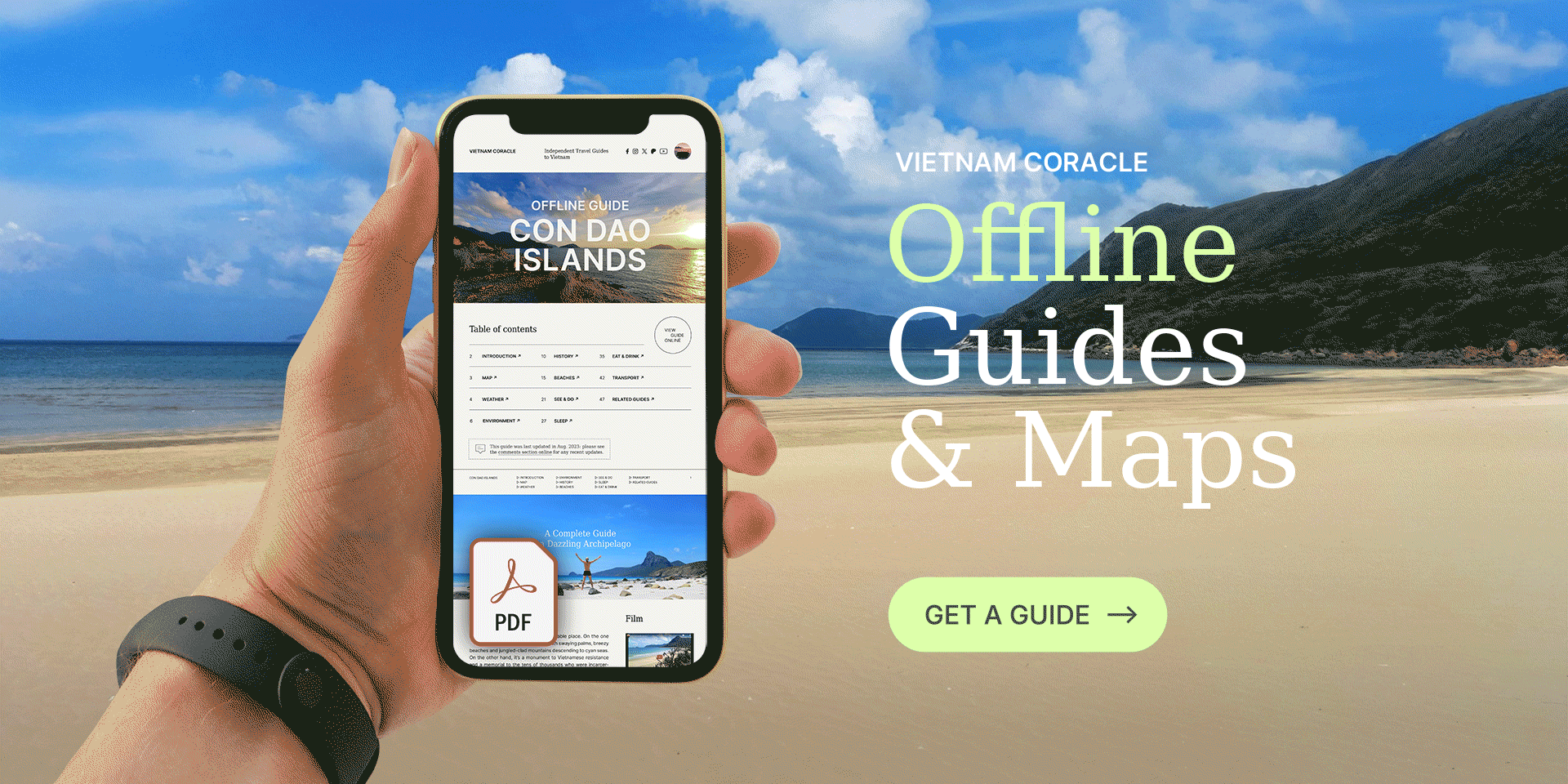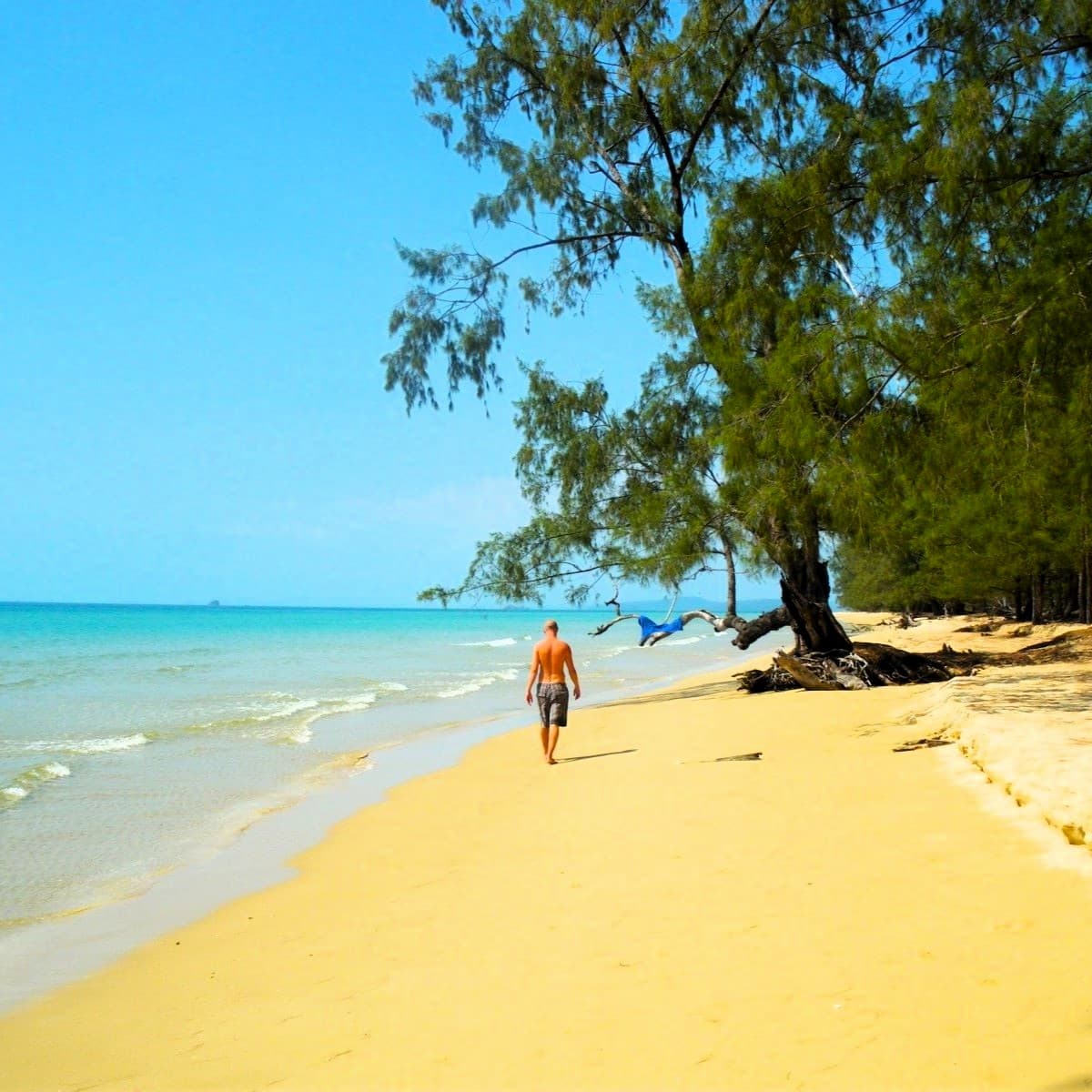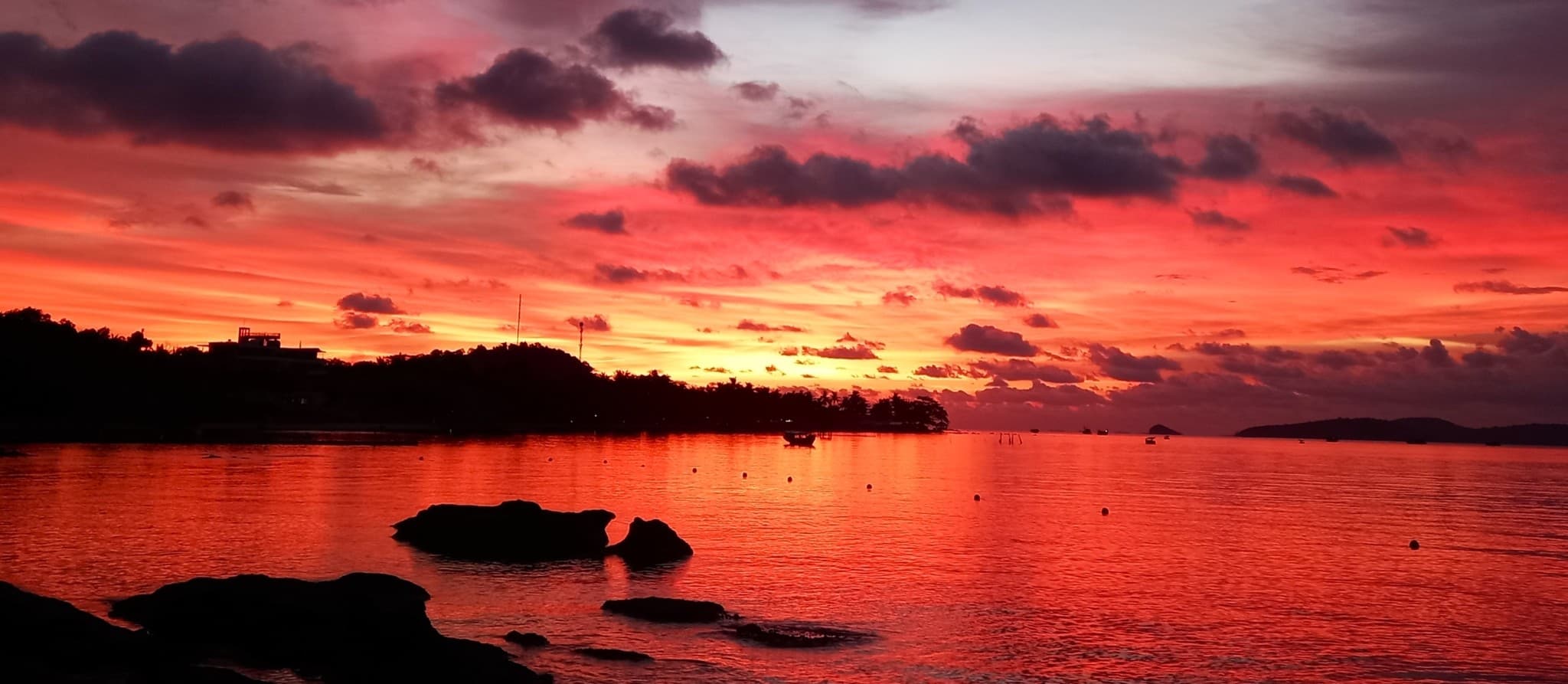First published October 2025 | Words and photos by Vietnam Coracle | Read time 15 minutes

Tom Divers is the founder and creator of Vietnam Coracle. In 2005 he moved from his native London to Vietnam, where he has been living, working and travelling ever since. He pays rent in Ho Chi Minh City but is more often on the road, riding his motorbike a quarter of a million kilometres across Vietnam to research guides to the farthest-flung corners of the nation. When he’s not in the saddle, you’ll find him on a beach with a margarita, in a tent on a mountainside or at a streetside noodle house: in other words, at the ‘office’. Read more about Tom: Q&A, About Page, Vietnam Tourism website.
Choose to Experience the Best of Phú Quốc Island & Ignore the Worst
Commentary about Phú Quốc is absurdly binary. Both the established travel media and the informal, online travel community, such as blogs, social media and forums, seem incapable of balanced, nuanced reporting about the island. Depending on what you’re reading, watching or listening to, Phú Quốc is either ruined, overdeveloped, full of trash and over-touristed, or it’s an island paradise, a hidden tropical gem and one of the most beautiful islands in the world. Of course, the reality of Phú Quốc is neither of these. Parts of the island have been overdeveloped; most of it has not. Parts of the island are still ‘hidden gems’, most of it is not. Phú Quốc is big – it’s the biggest island in Vietnam – and complex. Painting the island with one brush is ludicrous. It would be like visiting one district in Ho Chi Minh City and thinking that was representative of the entire metropolis. Ultimately, independent travellers can choose which side of Phú Quốc to experience and explore: touristy night markets, gigantic integrated resorts that have literally bulldozed the natural environment, crowded beaches and noisy backpacker bars; or fresh seafood in local restaurants, hiking trails through the jungle, tasteful, low-rise resorts, empty beaches and clear seas. It’s up to you. This page aims to help discerning, independent travellers get the best out of Phú Quốc and simply ignore the worst.
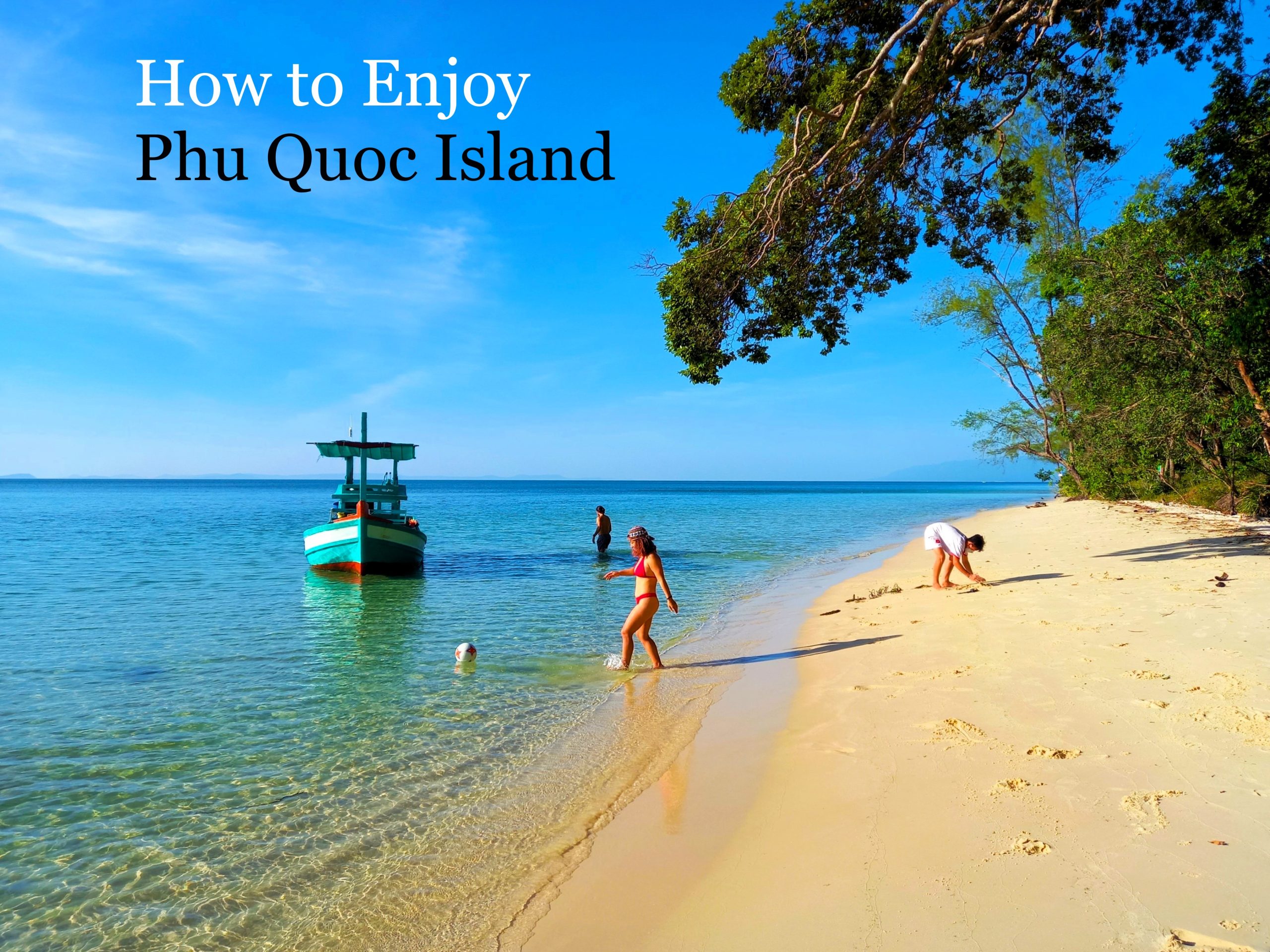
[Back Top]
HOW TO ENJOY PHU QUOC
Experience the Best of the Island, Ignore the Worst
This guide offers an overview of the four most important considerations when visiting Phú Quốc: where to stay, what to see and do, what to eat and drink, and how to get to/from and around the island (see Contents below). Where relevant, I’ve linked to dozens of my guides to specific aspects of Phú Quốc for much more detail. Bear in mind that weather and sea conditions are best from October to May; conditions can be wet and rough from June to September. And citizens from dozens of countries can travel to Phú Quốc visa-free for up to 30 days, providing that they don’t leave the island.
[If you enjoy this guide, please support my work with a donation]
Contents:
➤ Map
If you like this guide, please support Vietnam Coracle with a donation or become a member of my Patreon community or purchase an Offline Guide & Map. This website relies on reader support to maintain its independence & quality. Thank you, Tom
MAP:
Phú Quốc Island
Where to Stay:
View Map | Search Phú Quốc Hotels | Search Phú Quốc Transportation
Choosing where to stay on Phú Quốc might be the one decision that determines your experience of the island more than anything else. If you choose the ‘right’ resort on the ‘right’ beach, then there is a high probability that you’ll love the island. Likewise, the ‘wrong’ hotel on the ‘wrong’ beach could lead to a very negative experience.
The range and quality of accommodation on Phú Quốc is among the best in Vietnam – on a par with Hội An – so making a decision isn’t easy. What’s more, despite the competition, prices are massively inflated during the high season months (November-March), but they drop significantly during the rainy season (July-October).
First, choose your location: which beach do you want to stay on or near? To help you with this, I suggest looking at my Phú Quốc Beach Guide (which also includes recommendations of accommodation on each beach) and deciding which beach looks and sounds best for your personal tastes and needs.
Second, choose your type of accommodation: price-range and style. If you don’t like high-rise mega hotels aimed at package tourists, don’t stay in one of them! There are loads of tasteful, low-rise, small-scale resorts on Phú Quốc – you don’t have to stay in a monolithic monstrosity. If your budget stretches to $100/night or more, then the choice of excellent beachfront accommodation is superb. For around $50/night, there are still plenty of wonderful beach resorts in your price-range. At $25/night or less, you need to bear in mind that, like most tropical island beach destinations, beachfront accommodation comes at a premium. So, if you’re on a budget, you may have to settle for lodgings that aren’t directly on the beach. Having said that, you can still find great beachfront rooms for $25/night or even better quality and value for money just 5-10 minutes inland from the coast.
I have stayed in dozens of different hotels, resorts, guest houses and hostels on Phú Quốc. I have a handful of favourite accommodations on the island that suit my personal tastes, needs and budget depending on whom I’m travelling with and why I’m visiting. These include, for different reasons and in no particular order, the following: Mango Bay, Gold Coast, Thanh Kiều, Green Bay, Kiki Coconut, Lahana, Bamboo Cottages, Chez Carole, Island Lodge, The Pier and camping on the northern bays.
I have written detailed, independent reviews with loads of images for most of the above accommodations and many more in my Phú Quốc Hotel Reviews archive, which you can browse here or click the image below. In addition, you can use Agoda.com to look at prices and photos of hundreds of accommodation options on the island. You can also filter results by price-range, location and type of accommodation. (Click the image below to browse my full Phú Quốc Hotel Reviews archive.)
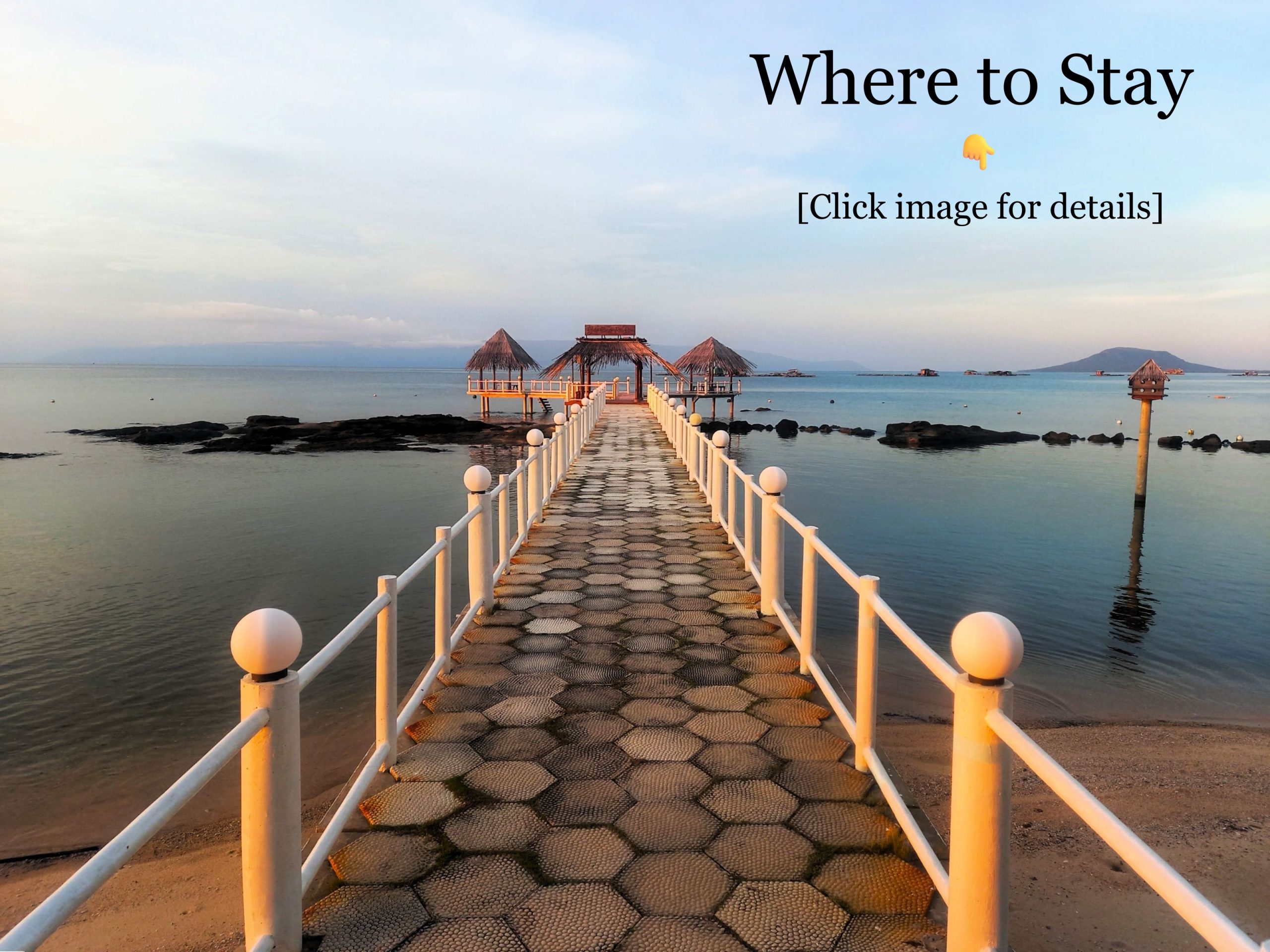
What to See & Do:
View Map | Search Phú Quốc Hotels | Search Phú Quốc Transportation
If you really want to, you can visit the gigantic ‘entertainment’ venues and artificial sites that present-day Phú Quốc has to offer. These include the enormous developments bookending the island on the northwest and southwest coasts, operated by VinGroup and Sun Group respectively. These feature water parks, safari parks, theme parks, aquariums, spectacular sound-and-light shows, replicas of Italian Amalfi coast towns and Venetian canals, record-breaking oversea cable cars, neo classical monstrosities housing international five-star hotels bearing down on the ocean, and much more. None of these are my kind of thing and almost all of them have been built at the expense of the natural environment. However, I have met plenty of independent travellers with families who admit that, although these places are not to their taste, they are great for the kids. What’s more, it’s hard not to at least be impressed by the sheer scale and brazenness of these colossal developments.
But did you really travel all the way to this tropical island to see tigers in a cage, ride gondolas on fake canals and go on water slides? Of course you didn’t. So, just don’t go to the large-scale VinGroup and Sun Group developments. No one is forcing you to go there, so don’t. It’s a big island and you can easily avoid these kind of sites if you want to. When I go to Phú Quốc I try to do some hiking (click here), visit waterfalls (click here), ride around the island’s roads stopping at any beaches that look empty and beautiful (click here), wild camp on the northern bays (click here), visit local temples such as the ones dedicated to local hero Nguyễn Trung Trực, amble around the back-streets and fresh markets of Dương Đông, Gành Dầu and An Thới, eat local seafood at local restaurants (click here), swim in the bath-like waters of the Gulf of Thailand at every possible opportunity, consume multiple margaritas while watching the sunset at numerous beach bars (click here) and, assuming that I’ve chosen my accommodation well, wallow in the context of my tropical island resort (click here).
To do this requires a bit more effort than getting a taxi to a theme park and buying an entrance ticket, but the rewards are worth the effort. I haven’t written guides to everything on the island, but the ones I have written should at least help point travellers in the right direction and give people the confidence to experience this side of Phú Quốc and just completely ignore the other side of it. (Click the image below to browse my full Phú Quốc See & Do archive.)
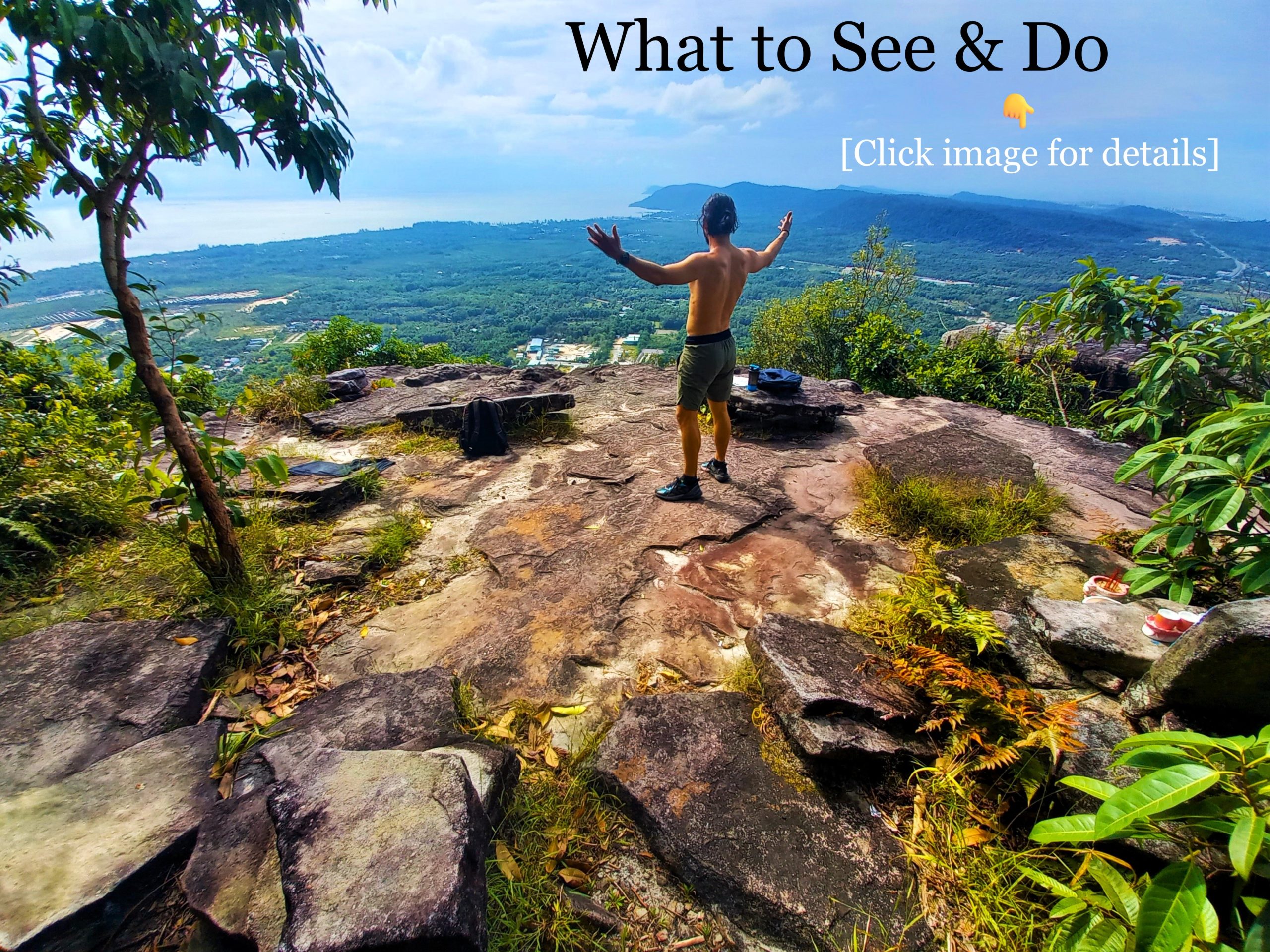
What to Eat & Drink:
View Map | Search Phú Quốc Hotels | Search Phú Quốc Transportation
These days, Phú Quốc has an impressive range of dining options, boasting cuisine from all over the world. In and around the main town of Dương Đông, Long Beach (Bãi Trường) and all resorts and entertainment complexes on the island, you’ll find everything from high-end Italian, excellent Indian, French restaurants, American BBQ, Mediterranean and Middle Eastern cuisine, and of course all kinds of East and Southeast Asian food. But surely you haven’t travelled all the way to Phú Quốc just to eat international food at international restaurants in international resorts!
If you want to go beyond restaurants that cater to tourists and the ever-increasing expat community on the island, this isn’t hard to do. Dương Đông is now a large, bustling Vietnamese town, and that means it’s full of delicious street food. Instead of wandering around the touristy Night Market (Chợ Đêm), take a stroll around the main streets and backstreets of Dương Đông and stop whenever you see or smell something delicious. Street food is very cheap, so you can afford to be adventurous and make ‘mistakes’. This is also a great way to interact and engage with local people.
Phú Quốc has two speciality noodle soups and they’re both great. My personal favourite is bún kèn, a cold noodle salad with shredded green papaya and a fish broth with coconut milk. Make sure you try it at Bún Kèn Út Lượm (click here for details), which has been serving the dish since 1980. The other noodle dish is bún quậy (‘stirring’ noodles), so named because you have to mix a flavourful dip and stir it into the fish broth with the noodles. Bún quậy is closely associated with a mini-chain called Kiến Xây, and they have outlets across the island (clcik here for details).
Phú Quốc’s seafood is famous. A speciality of the island is gỏi cá trích, a cold herring salad served with fresh herbs, wrapped in rice paper and dipped in a sauce. Try it whenever you see it on the menu at a local restaurant. For a real seafood feast – including grilled fish, shellfish and crustaceans of all kinds – head to the east or north coasts to one of dozens of superb local restaurants overlooking the sea (click here for details). In terms of food and atmosphere, it doesn’t get any better than this. Be adventurous and try to dine with a small group in order to make the most of the variety of dishes on offer.
When it comes to drinking, Phú Quốc has some great bars and cafes. The number of cool places for a sunset cocktail multiplies with each passing month: from beach shacks, local rum bars, hidden speakeasies, fancy rooftops, craft beer hangouts, cosy pubs, and streetside beer halls. You can start by checking out my guide to 21 Places for Cocktails on Phú Quốc. But things change all the time and there are new places popping up constantly. (Click the image below to browse my full Phú Quốc Food & Drink archive.)
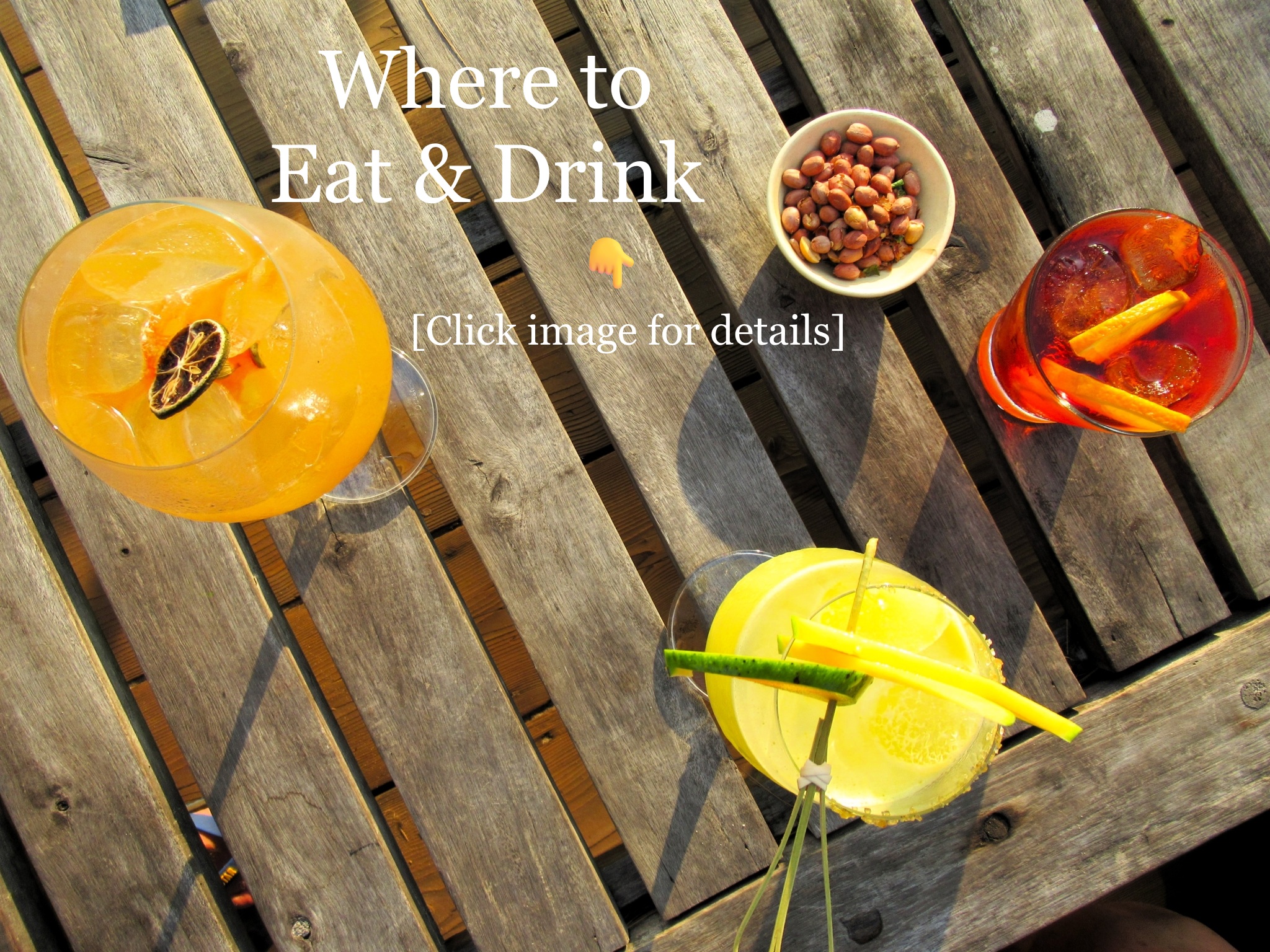
How to Get There & Around:
View Map | Search Phú Quốc Transportation | Search Phú Quốc Hotels
Getting to Phú Quốc is easy and affordable. The island is now astonishingly well-connected by air and sea. It’s incredible to think that, just over two decades ago, getting to Phú Quốc required a nine-hour voyage. Once you’re on the island, the road network is extremely good and paved roads now cover the entire island from south to north.
By Air: Phú Quốc International Airport receives dozens of flights daily from multiple domestic and international hubs. Ho Chi Minh City (Saigon) is only a 45-minute flight and Hanoi is 2 hours away by air. Both routes are served dozens of times a day by all of Vietnam’s airlines, including budget ones. International flights connect most of Southeast Asia and the wider continent, and direct flights to Europe and Australia are becoming more and more frequent. Check flights on Baolau.com.
Fast Boat & Car Ferry: The island is also connected by dozens of daily ferry services between the mainland Mekong Delta cities of Hà Tiên and Rạch Gía. Fast ferries and car ferries operate on both routes, and all vessels can carry bicycles and motorbikes, making this a great way to visit Phú Quốc on two wheels. Hà Tiên and Rạch Gía are both served by regular buses from other Mekong cities and Ho Chi Minh City. This makes the ferry a good option for any travellers wanting to combine a trip to the Mekong Delta with a visit to Phú Quốc Island. See my full Phú Quốc Ferry Guide for details.
Taxi & Bus: On the island, taxis are easily booked through hotels or restaurants or bars or via ride-hailing apps, such as Grab and Xanh SM. The latter operates a large fleet of electric cars and motorbikes on Phú Quốc. In addition, VinBus operates a free, island-wide bus service. The routes include the airport, ferry port, the main town of Dương Đông and most of the island’s most popular beaches. (Download the VinBus app for live schedules, routes and more.)
Motorbike & Bicycle: By far the best way to see, experience, explore and get around the island is by motorbike. These can be easily rented – start by asking at your accommodation – for around 150,000-250,000vnd per day. 90% of the roads on Phú Quốc are now paved, in great condition and fairly empty. (The only remaining dirt road is between Rạch Vẹm and Gành Dầu in the northwest of the island.) Even so, you still need to be extremely careful when riding on the island. Bicycles are good too. Some hotels have bikes available for guests. If not, just ask around and it shouldn’t be too difficult to find one. Having your own wheels on Phú Quốc is one of the keys to accessing parts of the island that are less developed. (Click the image below to read my full Phú Quốc Ferry Guide.)
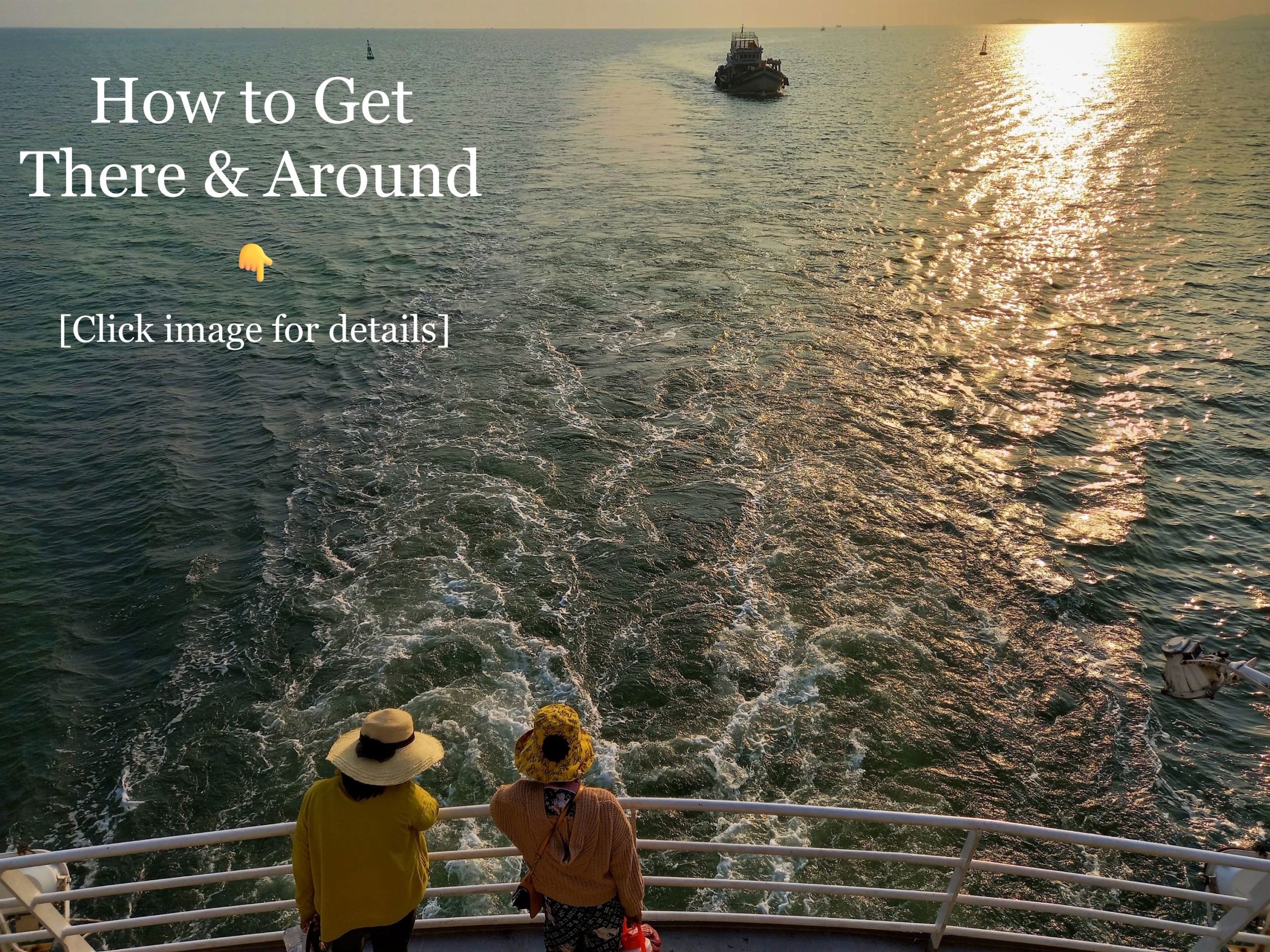
*Disclosure: I never receive payment for anything I write: my content is always free and independent. I’ve written this guide because I want to: I like this island and I want my readers to know about it. For more details, see my Disclosure & Disclaimer statements and my About Page
